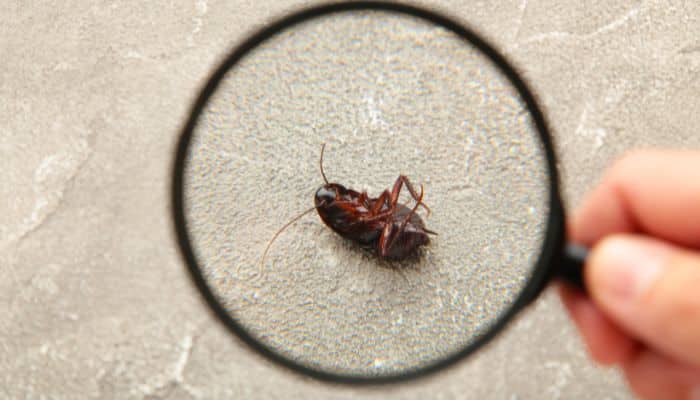Bugs Begone: A Guide to Tackling 5 Common Restaurant Pests Like a Pro
Restaurant vermin comes in various shapes and sizes. Some unwanted guests are more disgusting than others, but all are detrimental to the business. Learn how to tackle the five most common restaurant pests.
Ants
Food establishments attract the same ant species homes do. Older worker carpenter, odorous, pavement and pharaoh ants are the likely types you’ll find scouring for food and water to bring to their nests.
Why They’re a Problem
These minuscule foragers don’t pose the same health hazards as other pests. Still, they can contaminate food and bite or sting restaurant staff and patrons when threatened.
How to Keep Them at Bay
Seal all food containers and garbage bags. Clean up spills, wash dirty dishes, and deal with animal and insect carcasses immediately. Damp areas can attract ants, so fix leaky pipes and ensure all surfaces are dry. Starving them for a short period compels them to go elsewhere.
Flies
House and bottle flies go to restaurants to dine and lay eggs. They find organic matter and filth irresistible. Warmth is conducive to their reproduction. These insects also gravitate toward lights.
Why They’re a Problem
Flies can make people sick. They spit out the contents of their stomachs wherever they come to rest and spread pathogens to surfaces humans usually touch. For example, house flies are notorious for causing at least 65 severe illnesses to people.
Moreover, they lay eggs in food sources and turn into icky maggots when hatched. The sight of these larvae can make anyone’s skin crawl.
How to Keep Them at Bay
Limit their food sources — such as alcoholic and sugary liquids, overripe or rotten produce and dead animals. Never let dumpsters containing warm and moist food overflow or stay uncovered for too long.
Using food to bait and trap them can make their number manageable. Flies detest the scent of:
- Basil
- Cloves
- Eucalyptus
- Lavender
- Lemongrass
- Marigold
- Mint
- Peppermint
The presence of these deterrents — in the form of flowers or essential oils — will make your establishment unattractive to them.
Cockroaches
The ones that frequent restaurants are the American, German and brown-banded roaches.
Why They’re a Problem
Cockroaches transport germs from disease-ridden areas to supposedly clean surfaces and meals. These pesky pests also compromise food safety by damaging the packaging of ingredients. Evidence of roach infestation can result in a failed inspection and restaurant closure.
How to Keep Them at Bay
Like flies, cockroaches go to diners, coffee shops and bistros for food and shelter. Managing their food sources is pest control 101.
Also, use natural scents to your advantage. Roaches can’t stand the smell of bay leaves, cucumbers and mint. Spraying bergamot, citrus, cypress, eucalyptus, lavender and tea tree essential oils may help, too.
In addition, block their entry points — like open doors and cracks in walls. These pests can hitchhike using cargo shipments, so inspect deliveries carefully.
Rodents
Roof and Norway rats, and deer and house mice, are the usual four-legged invaders restaurateurs contend with.
Why They’re a Problem
Rodents can carry over 35 diseases, including leptospirosis, lymphocytic choriomeningitis and hantavirus pulmonary syndrome. Rats and mice chew into packaged goods and taint them with urine and excrement.
They also gnaw on various property areas to access resources — such as food, water and nesting materials — and hollow out cavities, and burrow in dark, warm areas. Rodents must chew things even when full to grind their continuously growing teeth.
Furthermore, rats and mice attack electrical equipment. They may mistake wires for tree twigs and plant stems. Rodents tend to target current-carrying electrical wiring, suggesting they respond to its sound or vibration. The fascination for or hatred toward your restaurant’s electrical system can lead to destructive fires.
How to Keep Them at Bay
Maintaining a clean establishment, observing best food storage practices, and sealing cracks and holes will keep rodents in check. Trapping them can also do wonders. Correctly handling the caught ones prevents health risks.
The above tips are practical in isolated rodent sightings. Regarding a full-blown infestation, using a pest control service provider is the way to go.
Pest Birds
Pigeons, starlings, swallows and whatever local birds are in the area can pester business owners and customers.
Why They’re a Problem
These nuisances can make al fresco dining a nightmare. They steal food from plates, attack diners, and leave droppings containing parasites, pathogens and allergens.
Birds may also take over commercial properties to roost, damaging your property and increasing fire risk. Some build homes made of combustible material near electrical boxes and carry lit cigarettes to their nests. Sharing your restaurant with these critters affects staff productivity due to more demanding cleanup chores and may raise your insurance premium.
How to Keep Them at Bay
These pests tend to avoid clean outdoor dining areas with few hiding spots. Handling food scraps promptly and prohibiting patrons from feeding birds can make a difference. Physical deterrents — such as nets, wires and spikes — are worth the expense.
Pest Control Never Ends
Constantly dealing with various vermin is a reality every restaurant owner must accept. If you follow these pieces of advice, you can attract the guests you want and repel the freeloaders that can jeopardize your operation.



Comments are closed.